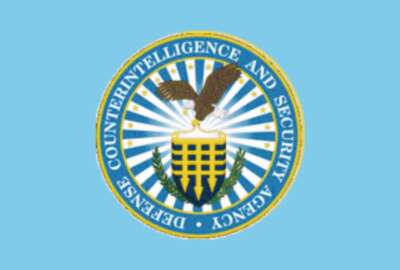Exclusive
New DCSA director sees a data-driven future for security clearances and more
David Cattler, a longtime intelligence official, sees a range of both near- and long-term priorities in his new role as director at DCSA.
The Defense Counterintelligence and Security Agency’s new director wants to get DCSA’s critical next-generation background investigations IT system back on track, while he also keeps an eye toward the “data-centric” future at the security agency.
In his first interview since taking over as DCSA director in late March, David Cattler discussed his initial thoughts and priorities for the agency’s vast mission. Cattler has extensive experience throughout the intelligence community. He most recently served as NATO’s top intelligence and security official.
Now he directs an agency with 15,000 employees in 172 locations across the country. It conducts 95% of federal background investigations — some 2.6 million cases annually — while also overseeing the security of 12,000 classified contractor facilities. And the agency also manages key counterintelligence and insider threat programs.
“This is an agency that’s just really big and has a huge security mission for the nation,” Cattler said.
He called DCSA’s personnel vetting mission a “tremendous responsibility.” The agency’s background investigations apparatus collects reams of personal information on millions of Americans seeking to obtain or keep a security clearance every year.
“The first task is to really be sure that people know who we are, and what we’re doing and why we’re doing it and that we do it well, and that we’re responsible about the protection of that critical data,” Cattler said. “I know that I would not want all the material that the government has collected on me to determine that I’m trustworthy, to be made available to anybody that wishes to exploit it for one reason or another. So I think that’s a really serious commitment that we’ve taken up.”
It’s been five years since DCSA was established with the merger of the Defense Security Service and the Office of Personal Management’s National Background Investigations Bureau, along with similar organizations.
The focus for the first couple years of DCSA’s existence was largely on stabilizing the background investigations backlog and integrating the various missions under one house. DCSA is now playing a crucial role in modernizing the federal government’s personnel vetting process, in addition to its other day-to-day responsibilities.
“We’re now at a point where we’re pretty close to full performance, but we need to really be sure that we’re there,” Cattler said. “And I think for me that’s a good strategic goal right in the beginning.”
He’s also challenging his team to look at the “far future” for DCSA, which Cattler called a “data-centric agency.”
NBIS delays
But for now, one of the most pressing items for the Cattler is getting the National Background Investigation Services (NBIS) program back on track.
DCSA is developing the IT system to replace multiple legacy background investigations systems. Once fully deployed, DCSA says NBIS will provide a “one-stop-shop IT system,” with security clearance applications, case management capabilities, records of security clearance decisions, continuous vetting data, and more.
But the program is facing major schedule, cost and performance challenges. DCSA recently initiated a “recovery plan” for NBIS, according to the latest update on Performance.gov. The agency had been working to decommission the legacy IT systems at the end of 2024, but that schedule is now at risk. As part of the recovery plan, DCSA is developing an “updated NBIS roadmap.”
Cattler said he’s already spent a lot of time reviewing the NBIS program. DCSA also recently hired a new program manager and a new program executive officer to oversee the program.
“We’re at a period now, especially since I’m new, but there was an ongoing effort already to take a look at, where are we in terms of the expertise?” Cattler said. “Do we have the right people inside and outside? We’re taking a hard look at the contractual framework. What are the requirements? What’s the timeline and what’s the cost? And then finally, to make sure that we have the right people in the right places in the right structures for oversight.”
The software system is crucial to the governmentwide “Trusted Workforce 2.0” initiative to modernize personnel vetting. Many of the initiative’s milestones, such as expanding continuous vetting and streamlining the different types of background investigation, are contingent on the successful development of NBIS.
“We’re looking at it very, very closely, and diligently, and we’re going to manage it with proper accountability and oversight,” Cattler said.
DCSA a ‘data-centric’ agency
The successful development of technologies like NBIS are also key to what Cattler sees as the “far future” for DCSA.
“The question I’m asking the leadership team and the workforce more broadly, is, what does the nature of the work environment for us look like in 2040?” Cattler said.
He’s particularly focused on how using data could streamline everything from DCSA’s security clearance investigations to industrial security reviews.
“In addition to being a security services provider, we are a data-centric agency,” Cattler said. “We do have that tremendous amount of information that we maintain, and all these very unique relationships with certainly the defense industry, but also all across government. And one of the central questions I’m asking is, are we wringing all the potential value out of that pool of data today? And what else can we do?”
The agency is already starting to harness more data and automation. It’s continuous vetting system, for instance, provides automatic alerts from local law enforcement databases when a clearance holder is arrested.
But Cattler sees the potential for DCSA to use data to better predict security and counterintelligence threats before they come to fruition. As a longtime intelligence analyst, Cattler said he views it as an “indications and warning” problem.
“I am certain that there are even today more tools that we could be using . . . that would have application to our work to more easily manage and curate the current dataset,” Cattler said. “We have to take advantage of even new datasets that could give us different signatures. All with the mindset that what we want is the earliest possible identification of a potential issue for personnel security, industrial security, or a counterintelligence [or] insider threat problem. So that ideally, you can take an affirmative intervention early and prevent a problem from manifesting.”
He suggested better data and AI tools could also help identify threat trends or even assist with background investigator training.
“Already in 19 days, I’ve come into contact with a great number of people inside government, outside government, who are that smart, who do have those connections, who have equal passion for the work and were saying, ‘Let’s get together and talk about it,’” Cattler said. “Because they’re very excited about what that future could be as is our team within DCSA.”
Copyright © 2024 Federal News Network. All rights reserved. This website is not intended for users located within the European Economic Area.
Follow @jdoubledayWFED






